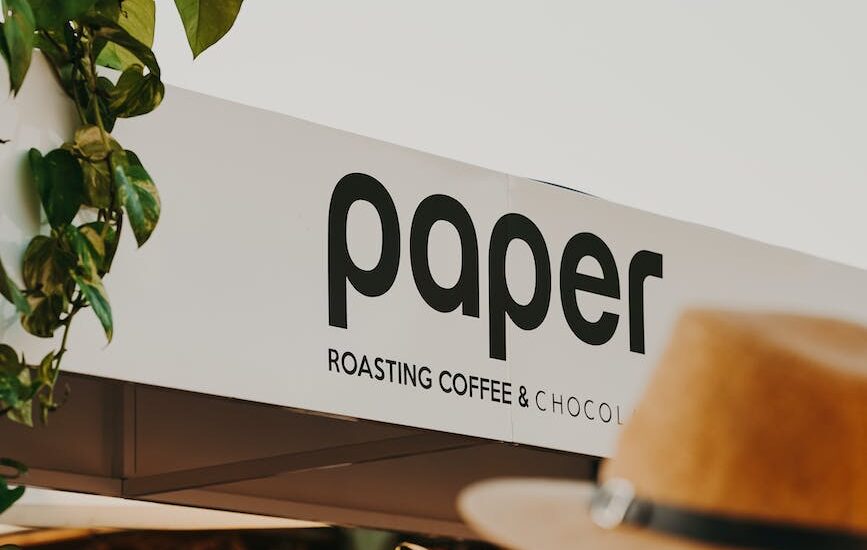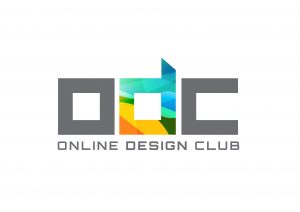- October 15, 2023
- Posted by: Design Team
- Category: food truck logo design

The Importance of Logo Design in Food Trucks
In the bustling world of food trucks, standing out from the crowd is paramount. This is where an eye-catching, memorable logo comes into play. The logo of your truck is much more than a decorative element; it’s an integral part of your brand identity and a key factor in shaping the perception of your business.
First Impressions Count
A logo is often the first interaction potential customers have with your food truck. It’s what catches their eye as they scan the lineup of trucks at a food festival or browse through social media pages. In just a few seconds, your logo needs to communicate your brand’s ethos, hint at the type of food you offer, and appeal to your target audience.
A well-crafted logo can draw people to your truck, sparking curiosity, and enticing them to try your food. On the other hand, a poorly designed logo can deter potential customers, causing them to pass your truck without giving it a second glance.
Communicating Your Brand Through Logo
Your logo serves as a visual representation of your brand and plays a vital role in conveying your brand’s personality and values. Through the use of colors, shapes, and most importantly, typography, your logo can communicate a wealth of information about your food truck business.
The typography used in your logo — the style, arrangement, and appearance of the text — can greatly impact how your brand is perceived. It’s a powerful tool to evoke certain emotions and associations in your audience. This is why understanding and effectively utilizing food truck logo typography is essential to create a logo that truly resonates with your audience and sets you apart in the competitive food truck landscape.
To better understand the role typography plays in logo design, and to glean some inspiration for your own logo, check out our comprehensive article on food truck logo ideas. Here, we delve into various typography styles and how they can contribute to creating a distinctive and appealing food truck logo.
In the following sections, we’ll delve deeper into the world of typography and its application in food truck logo design. We’ll discuss how to choose the right typefaces, balance size and weight, and consider spacing and alignment to create a logo that is not only visually appealing, but also effectively communicates your brand story.
Understanding Typography
As we delve into the world of food truck logo typography, it’s important to understand what typography is and why it matters. This knowledge will be invaluable when making design decisions for your food truck logo.
What is Typography and Why it Matters?
Typography refers to the art of arranging type to make written language more appealing and easier to read. It involves the selection of typefaces, point size, line length, line-spacing (leading), letter-spacing (tracking), and adjusting the space within letters pairs (kerning).
When it comes to food truck logo design, typography plays a crucial role. It’s more than just choosing a font; it’s about conveying your food truck’s personality, setting a mood, and eliciting emotions from your potential customers.
A well-chosen typeface can communicate the character of your food truck and subtly tell customers what kind of culinary experience they can expect. Whether your food truck offers a fun, quirky vibe, or a more refined, gourmet experience, the typography of your logo should reflect that. For more on how typography can shape your brand’s personality, check out our article on food truck branding.
Key Elements of Typography
There are several key elements in typography that you should be familiar with when designing your food truck logo.
-
Typefaces: The typeface or font is the specific style and design of the letters. Some common types of typefaces include serif, sans-serif, script, and display. Each typeface carries its own mood and personality.
-
Font Size: The size of the font can impact readability and perception. Larger font sizes are typically used for headings or to draw attention to certain elements.
-
Line Spacing: This refers to the vertical distance between lines of text. Proper line spacing improves readability and aesthetics.
-
Letter Spacing: Also known as tracking, this is the horizontal spacing between letters. Adjusting letter spacing can impact readability and the overall look and feel of the text.
-
Color: The color of your text should align with your overall brand colors. Color can also influence mood and perception.
-
Hierarchy: This involves creating different levels of emphasis within your text, usually through a combination of size, weight, and color.
Understanding these elements can help you make informed decisions when it comes to your food truck logo typography. Remember, your typography should not only be visually appealing but also legible and reflective of your food truck’s personality. For more ideas on how to use typography in your logo, visit our food truck logo ideas page.
Making Typography Work for Your Food Truck Logo
When it comes to food truck logo typography, a few key elements can make a significant difference in how your brand is perceived. Let’s dive into some of these important considerations: choosing the right typefaces, balancing size and weight, and considering spacing and alignment.
Choosing the Right Typefaces
The typeface you choose for your logo can speak volumes about your food truck business. A well-chosen typeface can convey your brand’s personality and help set the tone for customer expectations.
For instance, a serif typeface might suggest a more traditional or formal dining experience, while a sans-serif typeface could indicate a modern, casual vibe. Script typefaces can add a touch of elegance or creativity, while display typefaces can bring a sense of fun and uniqueness.
To choose the right typeface, consider your food truck’s theme, the type of food you serve, and the message you want to convey to your customers. You can find some great ideas in our collection of food truck logo fonts.
Balancing Size and Weight
The size and weight of your typography play a crucial role in your logo’s readability and overall impact. Larger, bolder fonts can grab attention and are easily readable from a distance – a big plus when your logo is on a moving truck. However, they should be balanced with smaller, lighter fonts to avoid overwhelming the design.
Remember, the most important thing is that your business name and any essential information are clear and legible. Experiment with different sizes and weights to find the perfect balance for your food truck logo.
Considering Spacing and Alignment
Spacing and alignment are often overlooked, but they can significantly influence the readability and aesthetic appeal of your food truck logo. Too little space can make your logo look cramped and difficult to read, while too much space can make it look disjointed.
Similarly, alignment plays a key role in creating a cohesive and organized look. Whether you choose left, center, or right alignment, consistency is key.
If your logo includes both text and images, ensure they are well integrated and harmonious. This can involve placing your text within an image, wrapping text around an image, or using an image as a letter within your text.
For some visual inspiration on how to effectively use typography in your food truck logo, take a look at our food truck logo examples.
Effective typography can transform a good logo into a great one. By carefully considering your choice of typefaces, the size and weight of your text, and the spacing and alignment of your elements, you can create a compelling food truck logo that truly represents your brand.
Typography and Brand Personality
Typography plays a crucial role in shaping the brand personality of your food truck. It can influence how customers perceive your food truck business, and whether they feel your brand aligns with their preferences and lifestyle.
How Typography Influences Perception
When customers see your food truck logo, the typography you choose can evoke specific feelings and associations. For instance, a bold, capital-letter typeface might convey strength and reliability, while a script font could suggest elegance and tradition. A modern, minimalistic font might appeal to younger, trendier customers, while a vintage typeface could attract those who appreciate a touch of nostalgia.
In essence, the food truck logo typography you choose can help to establish your brand’s character and set the tone for your customer’s experience. For more on how typography influences perception, check out our article on food truck logo fonts.
Matching Typeface with Food Truck Theme
Choosing a typeface that aligns with your food truck’s theme can reinforce your brand personality and make it more memorable. For instance, if you run a Mexican food truck, you might choose a typeface that reflects the vibrant and lively culture of Mexico. If your truck serves gourmet, artisanal dishes, a sophisticated and elegant typeface could be a better fit.
To find inspiration, you can look at food truck logo examples that have successfully matched their typeface with their theme. You can also experiment with different fonts using a food truck logo maker.
Remember, the key is to choose a typeface that not only matches your food truck’s theme but also resonates with your target audience. By doing this, you can ensure your food truck logo effectively communicates your brand personality and stands out in the competitive food truck market.
Typography Tips for Food Truck Logos
As we guide you through designing an effective food truck logo, it’s crucial to discuss the importance of typography. Here are some pointers to help enhance the readability, consistency, and adaptability of your food truck logo typography.
Readability is Key
First and foremost, the typography in your logo must be easy to read. Remember, your logo often serves as the first point of contact between your food truck and potential customers. If customers struggle to read the name or slogan of your food truck because of overly complex or unclear fonts, they may lose interest.
When selecting a typeface for your logo, consider factors like size, spacing, and simplicity. Avoid overly stylized fonts that could impede readability. Serif or sans serif fonts are often a safe bet, but don’t shy away from exploring more unique options, as long as they remain legible. For more typography choices, check out our article on food truck logo fonts.
Consistency Across Branding
Your logo’s typography should align with your overall brand image. Consistency across all branding elements helps solidify your brand’s identity and enhances recognition. If you’re using a particular font in your logo, consider using the same or a complementary font in other promotional materials.
For instance, if you’ve chosen a modern, minimalist font for your logo, it should reflect in your menu design, signage, and social media graphics. This helps create a cohesive visual identity that customers can easily recognize and associate with your food truck. For more on this, visit our article on food truck branding.
Adapting to Different Contexts
Lastly, ensure that your logo’s typography works well in various contexts. Your logo will appear in different sizes and formats, from the side of your truck to your social media profiles. It’s essential that your logo remains clear and recognizable, whether it’s on a large banner or a small business card.
This means selecting a font that is legible at different sizes and can adapt to both digital and print formats. You may also need to create different versions of your logo (horizontal, vertical, simplified, etc.) to accommodate different spaces and mediums. Check out our article on food truck logo layouts for more information.
By prioritizing readability, maintaining brand consistency, and ensuring adaptability, you can create a logo that enhances your food truck’s appeal and sets you up for success. For more logo design tips and inspiration, visit our food truck logo design guide.

